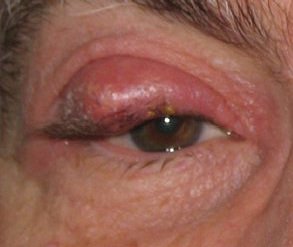It’s a beautiful day… until you wake up with THIS.
Hi, I’m Dr. Michele Lee and I am a board-certified ophthalmologist. One of the more common emergency visits I get as an ophthalmologist is for a sudden bump on the eyelid or lid swelling, and many times it turns out that all the fuss is from a stye or a chalazion.
A stye is an infection of an outer hair follicle while a chalazion comes from a blocked oil gland, otherwise known as a meibomian gland, that is found on the eyelid margins. A stye is usually smaller, like a pimple, and on the outside of the lid while a chalazion is usually larger, without a visible whitehead.
Regardless of this distinction, the first-line treatment is going to be warm compresses, and I recommend aggressive warm compresses as soon as these start - at least 4 times a day for 5 minutes or more each time. These warm compresses should be warm, not hot. You don’t want to burn your eyelids!
You can use a clean towel and use hot water from the sink or bathtub. Another method that works well is a special eye mask like the Dr. Bronner mask which retains heat a little longer. A poor man’s version of this mask is filling an old tube sock with rice, tying off the end with string, and microwaving this contraption for 30 seconds. The mask and sock method will be less messy and retain heat longer than the wet towel.
Following heat application, I recommend a gentle massage on the eyelid to try to express some of the material out of the lesion. However, if your provider would like you to avoid this step please heed her advice.
If your eyelid is completely swollen, red, and very tender to the touch, you need to see your eye care provider immediately. Sometimes if there is a concern for an infection, we need to start a course of oral antibiotics and follow you closely to make sure the infection does not spread.
When you see your eyecare provider, she might also start a course of a steroid drop or ointment to the eye to help with some of the inflammation around the lesion. However, in the majority of cases, even the largest chalazia will go away by 1 month with just compresses and time.
But when it doesn’t go away? I recommend you see your ophthalmologist because on request (s)he will drain it for you.




